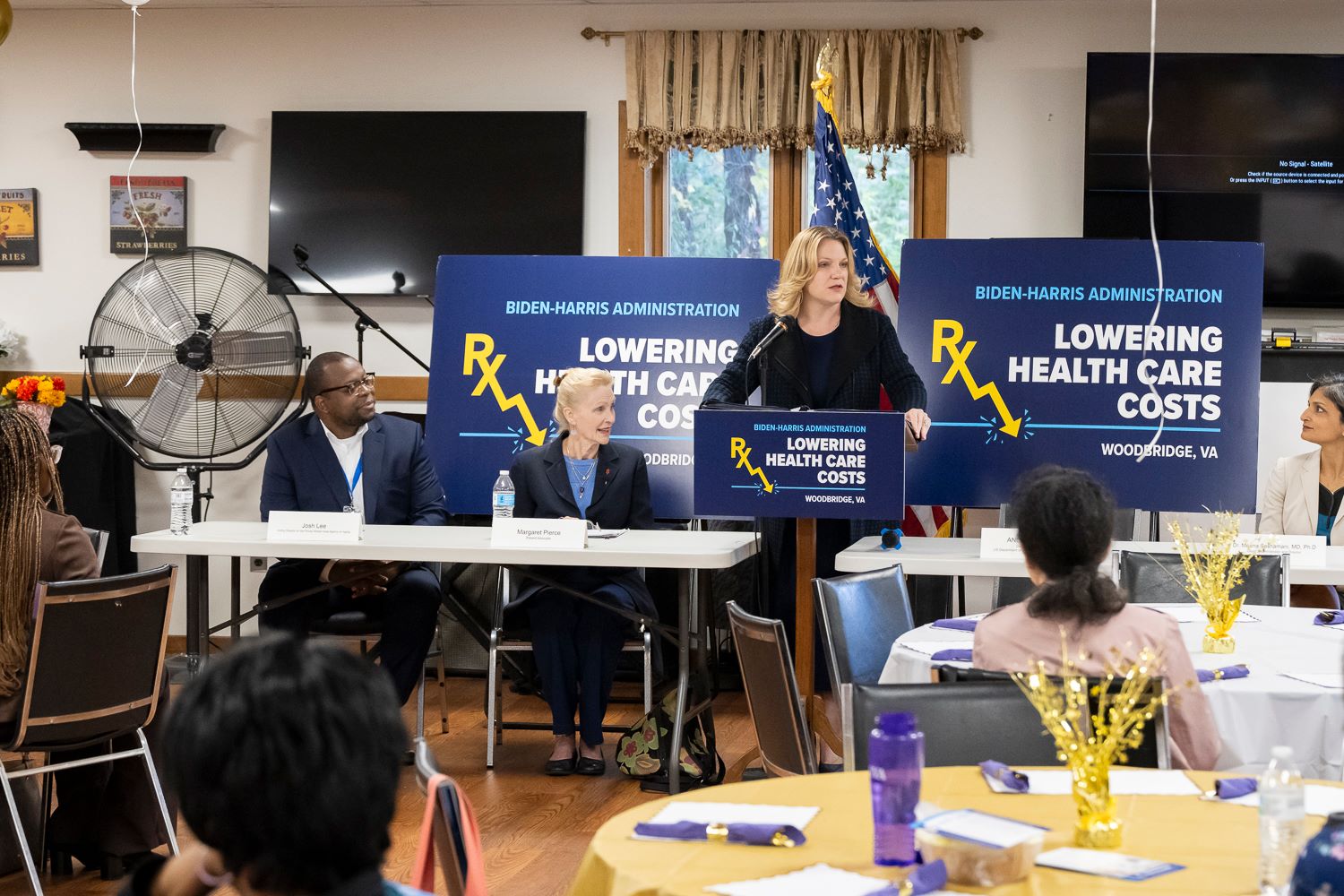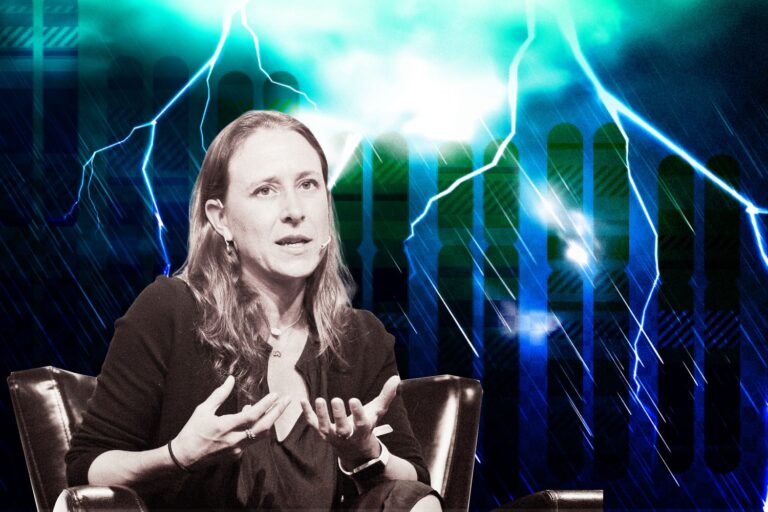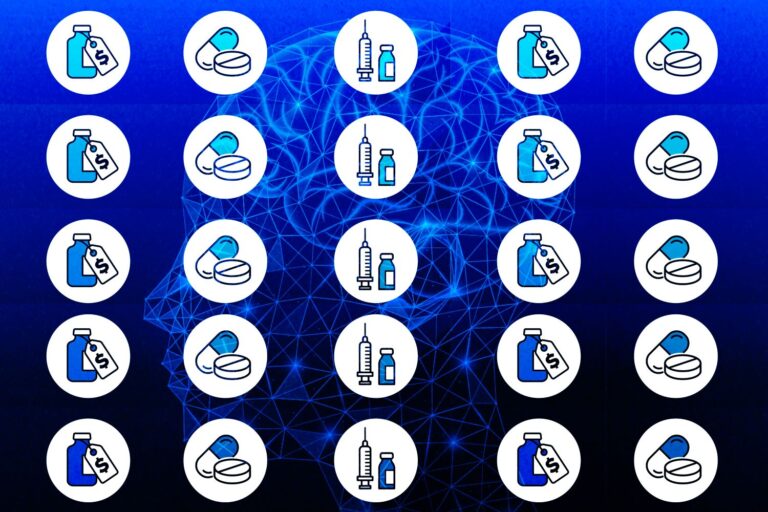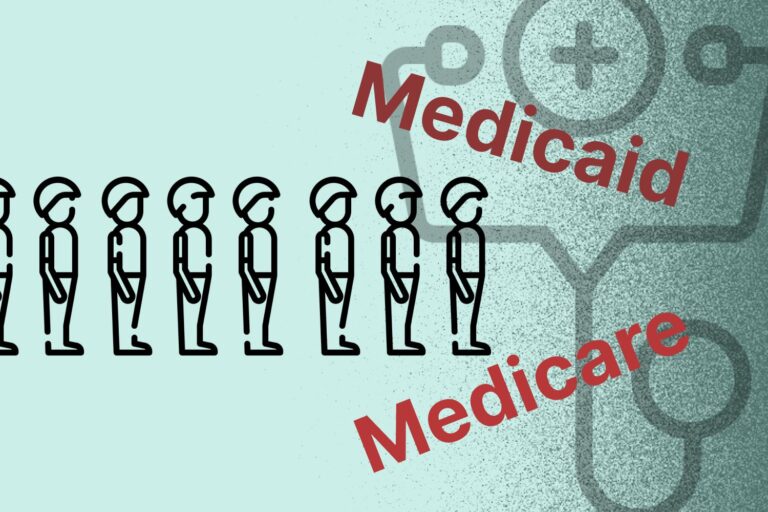The Roadblocks that Challenge Healthcare Reform
According to the World Bank, disparities in economic growth between developing and developed countries can be attributed to health issues and lower life expectancy, which account for about 50% of the gap. Healthier populations contribute to a more productive workforce, and improved health outcomes for children often lead to reduced birth rates, thereby decreasing the number of dependents.
America is well known for its innovations in the healthcare sector. However, not everyone has access to these advanced treatments due to the high costs. Yet, costs are only part of the challenges facing the U.S. healthcare system. Let’s take a closer look.
The Ongoing Struggles of U.S. Healthcare
When talking about high costs, we need to bring medical debt in America to the table.
The High Cost of Healthcare – Why Medical Debt Burdens So Many Americans
Healthcare costs in the United States have seen significant growth over the years. In 2022, healthcare spending grew by 4.1% to reach $4.5 trillion. This growth rate is comparable to pre-pandemic rates, such as the 4.1% increase in 2019. However, looking at a longer period, healthcare expenditures increased by 93% from 2004 to 2018, compared to a 41% rise in total expenditures during the same period.
And that’s not even the worst side. As shared by CNBC, the United States has by far the greatest burden of health care bills and individuals, with 7.4% of US residents facing catastrophic health care bills each year—more than double the next closest country.
Currently, 100 million people in this country have some kind of health care debt, which is about 40% of adults. In 2019, U.S. medical debt totaled at least $195 billion. Having insurance doesn’t always insulate people in the U.S. from debt; over 90% of the U.S. population has some kind of health insurance, but medical debt remains a persistent issue.
“Basically, our health care system is creating debt on an industrial scale.” Noam Levey, Senior Correspondent at Kaiser Health News, said.
He also added that “”You’ve got two things that have been going on: one, the high prices of medical care, and number two, patients having to shoulder more of the burden of paying those bills that, 20 or 25 years ago, might have been covered mostly or entirely by their health insurance plan.”

In 1965, the introduction of the third-party payer system, where insurers cover a portion of medical costs, significantly contributed to the rise in healthcare costs and medical debt in the U.S. Over the past century, healthcare costs have consistently outpaced overall consumer prices, with the U.S. spending nearly seven times more per capita on healthcare in 2020 compared to 1970. Health care now accounts for about 20% of the economy, up from 10%.
Various factors, including a lack of preventative care and price transparency, have driven up costs. Medicare’s generous reimbursements in the late 1960s allowed hospitals and physicians to charge high fees, leading to the fee-for-service model, which incentivizes more services. Efforts to control costs in the 1980s and 1990s, such as fixed-rate reimbursements and the rise of HMOs, had mixed results. The shift to PPOs in the mid-1990s provided more flexibility but less cost control, leading to increased cost-sharing to influence patient behavior.
The Absence of a Fully Government-Run Healthcare System in the U.S.
One significant aspect of the American healthcare system is its failure to implement a government-run or heavily regulated system that could effectively control costs.
According to David Goldhill, CEO of SesameCare.com, in a groundbreaking article for the Washington Post, the United States cannot adopt a government-run or heavily regulated healthcare system because it significantly subsidizes healthcare for other countries.
He said “The world’s other health-care systems survive only because they receive a massive and ongoing, but hidden, subsidy courtesy of the inefficient U.S. system. Two unique features of our arrangement — the absence of price controls and the profit drive of doctors and hospitals — allow other countries to transfer the risk and cost of medical innovation to Americans.”
The U.S. healthcare industry is unique because it is the primary marketplace for the development of new pharmaceuticals, medical devices, diagnostics, medical software, and procedures. While other countries have excellent medical institutions, the profit opportunities that drive investment are primarily found in the U.S. This means that the high prices Americans pay for healthcare fund the research, testing, and development of new medical innovations, which are then used worldwide.
Despite this innovation, healthcare costs in the U.S. have skyrocketed. This is partly due to the third-party payer system involving large insurance companies, Medicare, and Medicaid, which limits price competition. Hospitals and drug companies do not compete on price, leading to higher costs.
“Hospitals and drug companies never advertise in having lower prices, but the rise of employer-provided plans with high deductibles and co-pays means people are paying more out of pocket for medical services and are becoming price conscious. A more consumer-oriented market is arising, which will start to force providers to compete on both quality and price,” as explained by Steve Forbes, American publishing executive and politician who is the editor-in-chief of Forbes, a business magazine.
Unequal Access to Healthcare Across Different Demographics
Unlike many other developed nations, the U.S. does not have a universal healthcare system, leaving millions uninsured or underinsured. This can result in individuals avoiding necessary medical care due to cost concerns.
Even for those who qualify for insurance coverage, race can significantly influence whether they actually receive it.
At the recent Anesthesiology Annual Meeting in Philadelphia, research highlighting racial disparities in U.S. healthcare was a notable focus. While the conference featured innovative topics such as space anesthesiology and AI’s influence on the field, three studies specifically addressed the long-standing issue of racial inequity.
The National Institutes of Health defines health disparities as differences in health conditions among specific population groups, often highlighting racial or ethnic variations. A 2022 study described these disparities as “profound and persistent,” noting that pre-pandemic data from the CDC indicated a life expectancy of 74.7 years for African Americans compared to 78.6 years for white individuals.

The studies presented at the conference examined how race and ethnicity affect access to critical medical transport after severe injuries, the effectiveness of pain relief after major surgery, and mortality risks following coronary artery bypass graft surgery, confirming that racial disparities in healthcare remain significant.
High Administrative Costs in the U.S. Healthcare System
Over the past two decades, studies have found that administrative expenses account for 15% to 25% of total national healthcare expenditures in the U.S., amounting to $600 billion to $1 trillion annually.
These costs are driven by billing and coding, physician administrative activities, and insurance administrative costs. A 2019 study estimated administrative spending at $950 billion, with 94% in five key areas: financial transactions, corporate functions, operational functions, customer services, and clinical support.
While some administrative activities are necessary, U.S. healthcare administrative expenses are high compared to other nations. These costs are often underestimated as they exclude segments like employee benefit consultants. High administrative costs reflect the U.S. value on choice, leading to payer fragmentation and complexity.
Initiatives to Transform the Healthcare System
To tackle these pain points, Various initiatives have been proposed and implemented to address these issues, aiming to create a more efficient, equitable, and sustainable healthcare system.
In the early 2000s, significant federal legislation was enacted to restructure how insurance plans shared costs. One notable example is the Medicare Prescription Drug, Improvement, and Modernization Act of 2003, signed into law by President George W. Bush. This legislation introduced Medicare Part D, which provided prescription drug coverage to Medicare beneficiaries. It marked a major shift in how costs were managed and shared between the government, insurers, and individuals.
In 2010, the Affordable Care Act (ACA) was enacted, representing one of the most comprehensive overhauls of the healthcare system in decades. The ACA aimed to expand health insurance coverage, improve healthcare quality, and reduce costs.
Key provisions included the individual mandate, which required most Americans to have health insurance, the expansion of Medicaid to cover more low-income individuals, and the establishment of health insurance marketplaces where people could purchase subsidized insurance plans.
Another major reform proposal is Medicare for All, which has gained traction in recent years. This proposal advocates for a single-payer healthcare system where the government would provide health insurance for all residents.
The goal is to simplify the healthcare system, reduce administrative costs, and ensure universal coverage. While the idea has been debated for decades, it has seen renewed interest and support in the 21st century, particularly during the 2016 and 2020 presidential campaigns.
In addition to these large-scale reforms, there have been efforts to introduce a public option, a government-run health insurance plan that would compete with private insurers. This approach, which has been discussed since the early 2000s, aims to increase competition and provide more affordable options for consumers without completely overhauling the existing system.

Payment and delivery system reforms have also been a focus, particularly with the introduction of the ACA. These reforms aim to shift from a fee-for-service model, which incentivizes quantity over quality, to value-based care. Initiatives like Accountable Care Organizations (ACOs) and bundled payments were introduced to incentivize healthcare providers to focus on quality and efficiency, improving patient outcomes while controlling costs.
Expanding Medicaid has been another critical effort, particularly following the ACA’s implementation. Several states have opted to expand Medicaid, which has helped reduce the uninsured rate and improve access to care for low-income individuals. This expansion has been a significant step toward addressing healthcare disparities and ensuring that more Americans have access to necessary medical services.
Addressing prescription drug prices has also been a priority, with various proposals aimed at controlling the rising costs of medications. These efforts include allowing Medicare to negotiate drug prices, importing drugs from other countries, and increasing transparency in drug pricing. These measures have been discussed and implemented to varying degrees over the past few decades, reflecting ongoing concerns about the affordability of medications.
Evaluating the Impact of Healthcare Reform Initiatives
Dr. Luke Messac, a Health Policy Historian and Emergency Physician at Brigham and Women’s Hospital, explains that the 2003 Medicare Modernization Act “further increased the pressure on patients and on hospitals by helping in the proliferation of high deductible health insurance plans.”
These plans require patients to pay a substantial amount out-of-pocket before their insurance coverage kicks in, which can be particularly challenging in emergency situations or for those without sufficient financial resources.
Dr. Peter Kongstvedt, Senior Health Policy Faculty at George Mason University, critiques this approach, stating, “The theory—touted by many who knew better—was that since you’re going to have to pay a lot of this money out of your pocket and there’s going to be this big gap in coverage, you’re going to pay attention. But if you’re having chest pain, or you’ve been in a crash, or you just don’t know what to do when the doctor says you need a specific type of treatment, what are you going to do?”
While the Affordable Care Act (ACA) expanded Medicaid and provided some protections against medical debt, it did not significantly curb the rise of high-deductible health plans. Noam Levey points out, “This dramatic rise in high-deductible health insurance predated the Affordable Care Act, but the ACA didn’t do anything to really arrest that change. More and more of us are ending up in these health insurance plans that require us to pay thousands of dollars out of pocket before our coverage kicks in.”
Dr. Luke Messac adds, “The effect of the ACA on medical debt was largely through the expansion of Medicaid. But at the same time, that law did allow for patients to purchase high deductible health insurance plans on the marketplace, so it didn’t stem the tide of that problem with insurance itself.”
The No Surprises Act, which went into effect in January 2022, aims to protect patients from unexpected medical bills when they inadvertently receive care from out-of-network providers. Cynthia Cox, Vice President at the Kaiser Family Foundation, explains, “Now, people who inadvertently go to an out-of-network provider, for example, by going to an in-network hospital but being seen by an out-of-network doctor, that patient is held harmless, and then it’s up to the insurance company and the doctor to work out how much gets paid to them.”
However, Noam Levey notes that it is still early to determine the law’s effectiveness, stating, “It doesn’t eliminate the problem entirely; it creates a system designed to protect patients and force a system of arbitration and negotiation between payers and medical providers that may be out-of-network.”
Efforts to address healthcare costs and medical debt in the U.S. have been incremental and piecemeal, indicating that comprehensive solutions are still needed. Dr. Peter Kongstvedt emphasizes the complexity of the issue, saying, “There is no one answer, it’s going to have to be a number of things being done at once, and it’s going to be painful for somebody, whatever we do.”
Why Is Healthcare Reform So Challenging in the US
We have been discussing the need for genuine healthcare reform for years, yet a significant transformation has yet to materialize. The undeniable truth is that achieving such reform is incredibly challenging.
The Reform will Affect Healthcare Jobs
One major concern about healthcare reform is the potential disruption to existing jobs in the healthcare sector. For instance, administrative roles within private insurance companies might be reduced if a single-payer system is implemented. This could lead to job losses and require workers to transition to new roles, which can be stressful and challenging.
There are also ongoing debates and uncertainty about the future of healthcare can contribute to burnout and job dissatisfaction among healthcare professionals, affecting retention rates and overall morale.

On the positive side, healthcare reform can create numerous opportunities for job growth and economic benefits. Expanding access to healthcare services can increase demand for healthcare providers, such as doctors, nurses, and allied health professionals, leading to job creation in these areas.
Plus, reducing healthcare costs for businesses can free up resources for investment in other sectors, potentially spurring economic growth and innovation. Improved health coverage can also enhance workforce productivity by reducing absenteeism and disability, contributing to a more dynamic and efficient labor market.
The Healthcare System is Burdened by Powerful Insurance Companies
The US healthcare system faces significant challenges due to the influence of powerful insurance companies, large hospital systems, and various medical industries. These entities often have substantial financial and political power, which they use to maintain the status quo.
This makes it difficult to implement reforms that could lower costs and improve access to care. For example, insurance companies may resist changes that threaten their profit margins, while large hospital systems might oppose reforms that could reduce their revenue from high-cost procedures.









